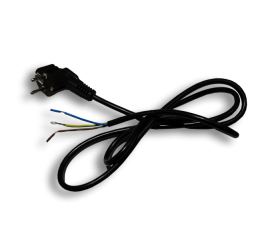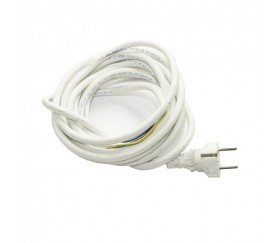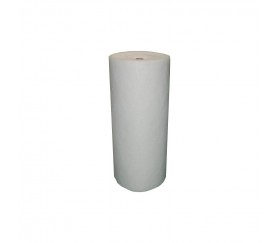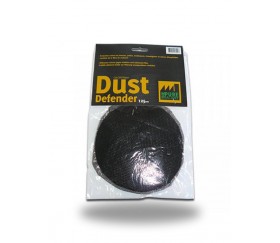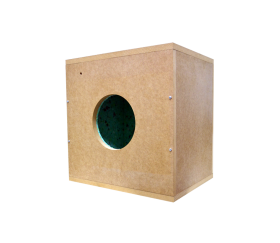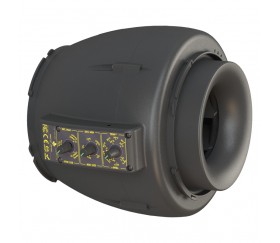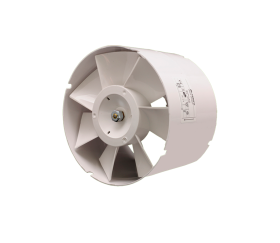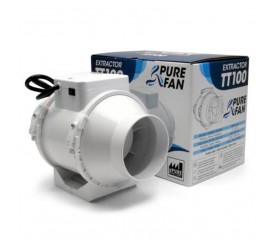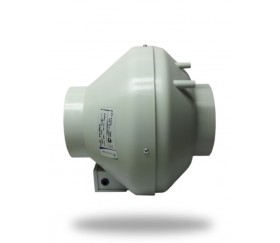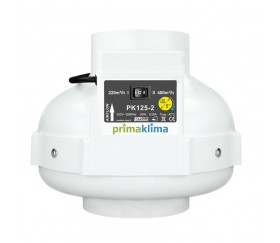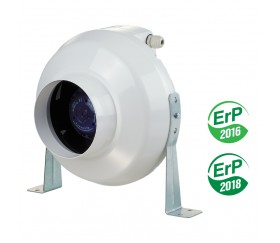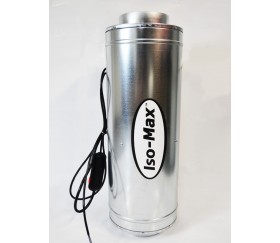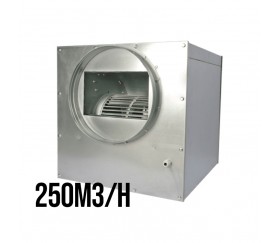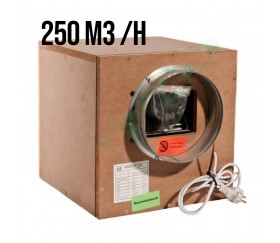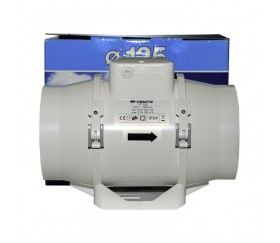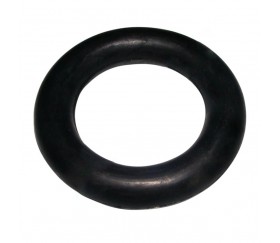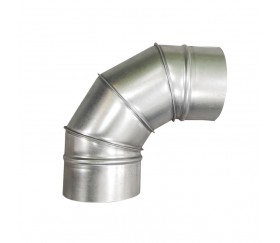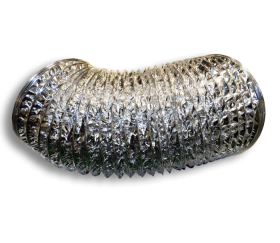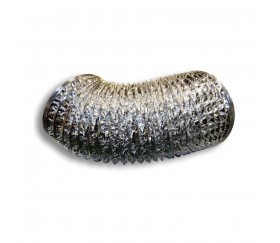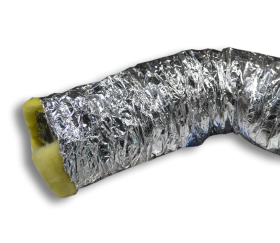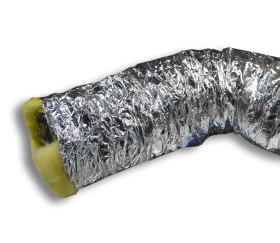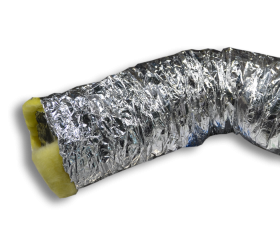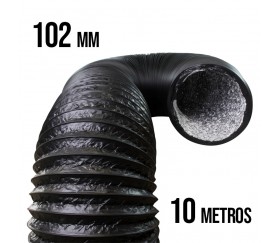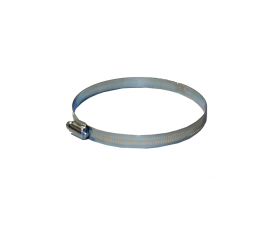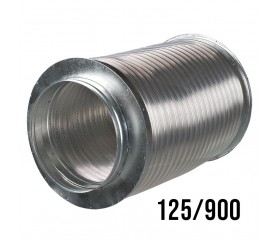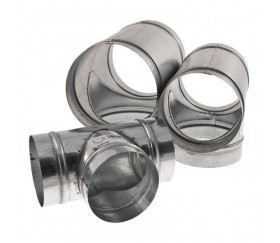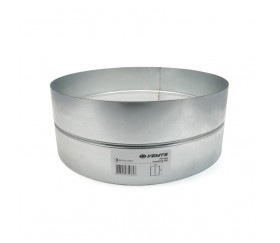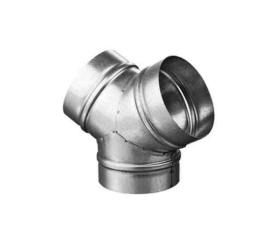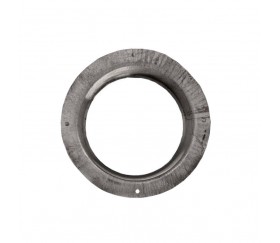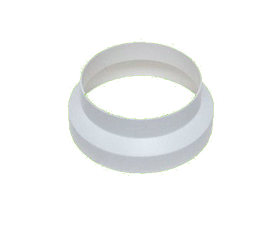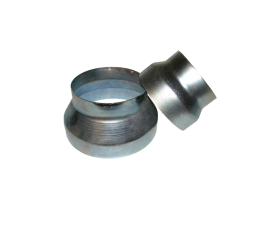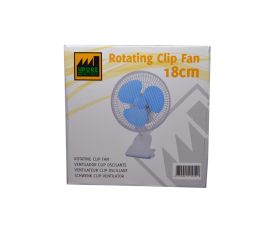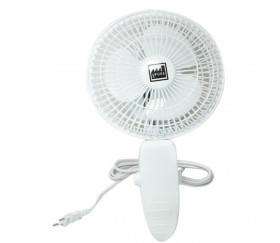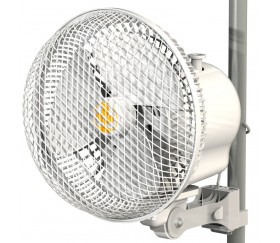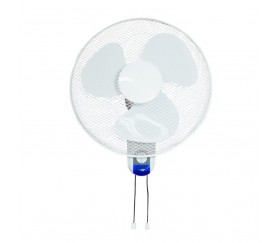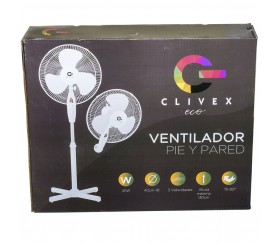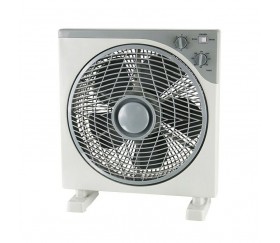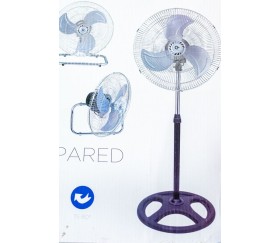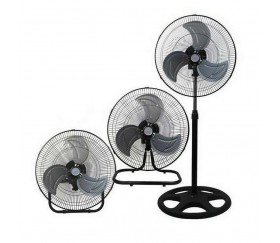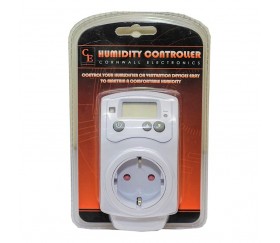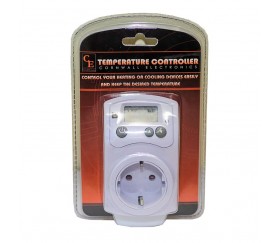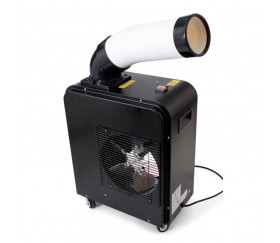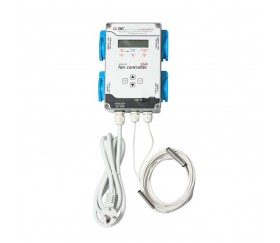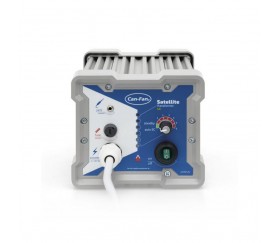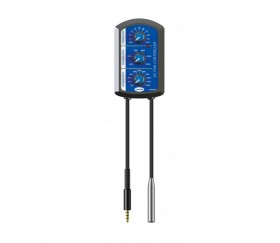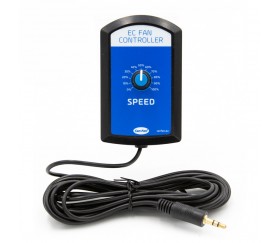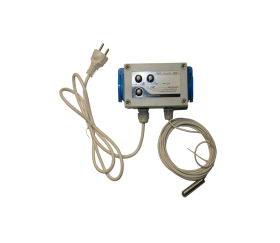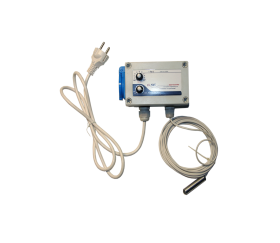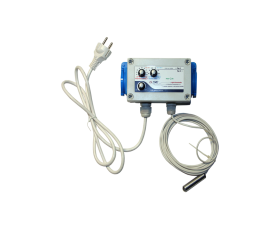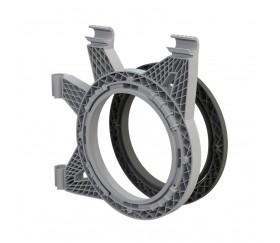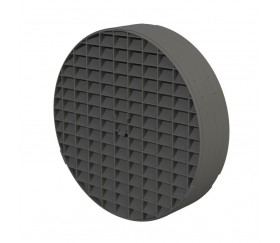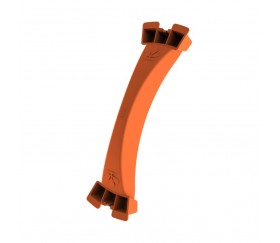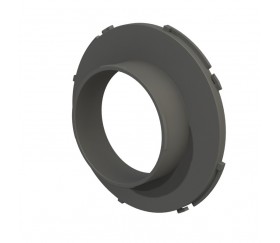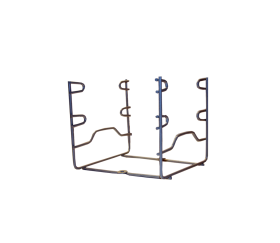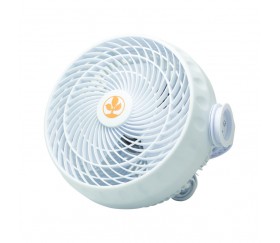Ventilation and Extraction Fan Systems
Ventilation and Air Extraction for Indoor Grows
Fresh air and air circulation in indoor grows are two fundamental factors for successful results.
Air circulation cleans your plants’ stomas (pores that are in charge of air exchange) so that they can properly breathe. Plus, when combined with extractors, ventilation is necessary for getting the best conditions for temperature, humidity and air quality.
Extraction removes any hot, humid with no Co2, while either passive or active air intraction replenishes the Co2 your plants consume.
The objective here is to renew the air in your grow room, removing hot air using an extractor and introducing fresh air using an AC unit or from outside.
The Importance of Ventilation when Growing Cannabis Indoors
Fans are used to create air currents in indoor grows in order to balance out the environment which stops stagnant air and humidity from forming.
Cannabis plants consume the CO2 around their leaves quite rapidly, taking about a minute to deplete it. Air pushes the CO2 around the room which allows your plants to keep breathing perfectly.
The objective is to get the air to circulate naturally; don’t have the fans set too high or else your plants will spend their energy strengthening their stems against the perceived “wind” rather than spending it on growing larger buds.
What Types of Fans are used in Grow Rooms?
There are many different types of fans out there, some of which are suited to indoor cannabis grow rooms such as:
Clip-On Fans
Clip-on fans can be attached to the structure of your grow tent by clipping them to the bars themselves.
They can either be oscillating or fixed.
- If you need constant airflow, for example underneath grow lights that produce a lot of heat, we recommend using a fixed fan.
- If you need to move air around your grow room to get rid of hot, humid pockets of air, you should use an oscillating fan for the best results.
Keep in mind that when using fans sometimes it can be more efficient to use two small fans rather than one large fan.
Stand Fans
- Stand alone fans are the most efficient type in grow rooms with more than one light.
- Can be adjusted in height.
- Has three speeds.
If you plan on using a stand alone fan we recommend placing it beside an air inlet, in the middle of one of the walls so that it can be evenly distributed around the entire grow. If you plan on using two, you should place one at each end of the wall facing inwards.
What Fan Do I Need for my Grow Tent or Grow Room?
Check out our catalogue, we have fans of all types for all growing rooms and tents.
- For smaller grow tents you can use the Clip Fan, a fixed clip-on fan that’s 15 cm in diameter and affordable. It’s ideal for grow tents up to 120x120 cm.
- If you’re looking for a larger oscillating fan, check out the Pure Factory Clip Fan; 18 cm in fan diameter and it uses 13w power.
- If you have a Dark Street or Dark Room grow tent, you should definitely use the Monkey Bar Fan, available in two models that fit all types of grow tents. They have a metal covering and a two-speed motor that works at 2300RPM.
20w Monkey Bar Fan
- 20 w
- 16.8 cm blade diameter
- Oscillating
30w Monkey Bar Fan
- 30w
- 18 cm blade diameter
- Fixed
You can use our 2 in 1 fan for large grow rooms or grow tents.
- 2 positions; stand-alone and wall fan.
- Can be adjusted up to 130 cm.
- 3 fan speeds.
- 75 – 80 ° spin.
- 40cm grid.
Air Filtration
Air circulation within your grow room caused by fans can be used to balance the temperature, humidity and CO2 inside. However, using a fan isn’t always enough to stop temperatures from rising. Grow lights in grow tents or closed grow rooms accumulate heat that you need to extract from the grow room while bringing fresh air inside.
To get rid of hot air inside your grow room and push it out you’ll need to use an extraction fan. Hot air needs to leave the room entirely; it can’t be allowed to accumulate in the room where your grow tent is in.
In order to make all of this hot air as discreet as possible, we recommend using an anti-odour filter or an ozone generator if you have a large grow room.
How to Calculate an Indoor Extraction Fan?
In order to calculate the type of extraction fan that you need you’ll need to keep in mind the size of your grow tent or grow room from which you want to extract the hot or humid air.
Here’s an example:
For a 100 x 100 x 200 cm grow tent you’ll need to calculate the following:
- Convert the measurements to meters – extractors work in m3/h.
- In our example, the volume is 2m3.
- You’ll need to renew the air at least once a minute, multiplying by x 60 in order to calculate the amount of air flow needed to empty your grow tent 60 times an hour.
- In this case, it would be 2 x 60 = 120m3 /h.
- This is the exact air flow needed to empty out this grow tent, although you’ll need to add the resistance created by your carbon filter when filtering aromas. This is easy – multiply the result by 3 in order to cover the filter, joints etc.
- In our example this would come out as 360m3 /h.
What Types of Intake is Used in Grow Tents
When you don’t use anything to actively intake air, it’s called a passive air intake – this naturally occurs when you have an extraction fan running.
If you plan on setting up an active intake, which is to say, using an extractor to get fresh air into the grow tent or grow room, the intake airflow should be half of the extraction air flow; you need to create negative pressure to make sure that hot air exits only through the extract fan.
In order to avoid insects from getting into your grow room via your air intake, we recommend using anti-insect filters or a Dust Defender filter if you’re using a Pure Tent, Light Baffle, Dark Street or a Dark Room grow tent.
What Type of Extractors Can You use Indoors?
Inline Extractors
- Less strength.
- Noisier.
- Useful for air intake and for small grow tents.
Turbo
- Highly recommended for small grow tents.
- Can be installed alongside each other, increasing extraction capacity, and inline in order to increase strength.
Tube Extractors
These extractors are the most efficient extractors when it comes to using additional accessories such as filters or losing pressure because of bends etc. It’s highly recommended thanks to its efficiency and lifespan.
Extractor Fans for Indoor Grow Rooms
Our catalogue stocks models such as:
Inline Winflex Extractor: this is an extractor designed for home growers and it’s ideal for extracting air from small grow tents or for using as an intake fan.
- Tube diameter: 100 mm - 107m3/h
- Tube diameter: 125mm - 185m3/h
- Tube diameter: 150mm - 305m3/h
Inline Winflex Turbo Extractor: this model comes with two different strength settings. It can be placed horizontally or vertically and set up one after another or right beside eachother.
- Tube diameter: 125 mm 220-280 m3/h
- Tube diameter: 150 mm 405-520 m3/h
Iso Max Silenced Extractor – Three Speeds. This extractor is the most-quiet extractor fan in our catalogue; made in Germany, it has an integrated silencer and metal casing.
- Tube diameter: 150 mm - 410 m3/h
- Tube diameter: 200 mm - 870 m3/h
- Tube diameter: 250 mm - 1480 m3/h
- Tube diameter: 250 mm - 2310 m3/h
- Tube diameter: 315 mm - 2380 m3/h
- Tube diameter: 315 mm - 3260 m3/h
- Tube diameter: 315 mm - 4800 m3/h
RVK Air Extractor Fan by System Air is without a doubt the best for grow tents and rooms. These are potent, efficient devices that are incredibly strong and sturdy. They can be installed in any position, just make sure that the ducting near the extractor isn’t bent.
- RVK 100 A1 175m3/h 29W. Tube: 100mm Noise: 45 d A/B
- RVK 125 A1 220m3/h 29W. Tube: 125mm Noise: 45 d A/B
- RVK 125 L1 341m3/h 61W. Tube: 125mm Noise: 50 d A/B
- RVK 150 A1 425m3/h 60W. Tube: 150mm Noise: 55 d A/B
- RVK 150 L1 666m3/h 115W. Tube: 150mm Noise: 57 d A/B
- RVK 200 A1 778m3/h 107W. Tube: 200mm Noise: 52 d A/B
- RVK 200 L1 983m3/h 160W. Tube: 200mm Noise: 53 d A/B
- RVK 250 A1 842m3/h 109W. Tube: 250mm Noise: 55 d A/B
- RVK 250 L1 1087m3/h 159W. Tube: 250mm Noise: 50 d A/B
- RVK 315 A1 1328m3/h 176W. Tube: 315mm Noise: 47 d A/B
- RVK 315 L1 1836m3/h 318W. Tube: 315mm Noise: 52 d A/B
How to Control Extractors and Fans
When your grow lights are on you should definitely keep your extraction and fan system on, too.
During the night cycle, depending on the humidity or temperature in your grow room, you can have it on all the time or set at certain periods, for example every 15 minutes.
During the final flowering stage, we recommend keeping the extraction and fan system on at all times to stop fungi from appearing at night. However, during the growth period or during the first few flowering weeks you can alternate between having it on or off.
You can use a timer or a Fan Controller in order to set the perfect on/off times for your extraction and fan system.
If you use a timer you’ll need to check the temperature and humidity in your grow tent at different times using a thermohygrometer designed to adjust the on and off times, as well as the power produced. Using a Fan Controller can save time and work, making for the perfect constant temperature and humidity.
Which Fan Controller to Pick?
Fan Controllers are relatively easy to use. They’re connected to the systems you want to adjust, and you can set the temperature and/or humidity depending on the controller. The controller is in charge of turning on or off your extractor depending on the indicated parameters. Let’s have a look at some different models:
- Fan Controller with Negative Pressure Adjuster: this is designed to control the temperature in your grow room. It keeps constant control over temperature and negative pressure to make sure that no aromas escape the grow room or tent.
- Ventilation Controller: this is ideal for setting a constant temperature in grow tents or rooms with more than one extractor.
- Fan Controller, Fan, Humidity and Temperature Adjuster: this is their most complete model, allowing you to control your extraction system in order to maintain the ideal temperature and humidity.
What Ducting to Use Indoors
In order to extract air from your grow room you’ll need to use ducting.
If you’re using an ozone generator in order to avoid odours, you’ll need to have at least 5 meters of ducting between the ozone generator and the outlet so that it works properly.
La Huerta Grow Shop stocks two types of ducting:
- Flexible aluminium ducting: for air extraction this is the cheapest option. It does what it’s supposed to. Ideal for using when you don’t have any noise issues.
- Air flowing through ducting can cause Noise. In order to avoid this you can use the Sonnoconnect Noise Dampening Ducting, a double duct with an insulating glass fibre layer that reduces noise by up to 80%.
Ventilation Connection Accessories
At La Huerta Grow Shop you can find all types of accessories needed for connecting your systems and ducting; metal and plastic reducers for attaching different diameter accessories, y joints, clamps, metallic joints etc.
Subcategories



